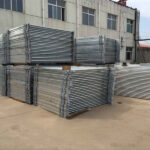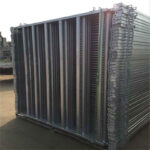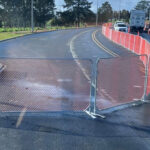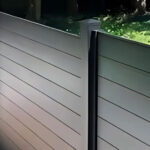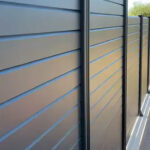Temporary fencing is a crucial element in various industries, particularly in construction and event management. In Australia, the standards for temporary fencing are designed to ensure safety, security, and compliance with local regulations. Let’s delve into the details of the Australian standard for temporary fencing and explore its implications for various stakeholders.
Understanding the Importance of Temporary Fencing Standards
Before we dive into the specifics of the Australian standard for temporary fencing, it’s essential to understand why these standards are crucial. Temporary fencing serves multiple purposes:
- Safety: It prevents unauthorized access to potentially dangerous areas.
- Security: It protects equipment and materials on-site from theft or vandalism.
- Liability: It helps businesses comply with legal requirements and insurance obligations.
- Project Management: It aids in organizing and controlling the flow of people and materials on a site.
Given these critical functions, it’s no surprise that Australia has developed specific standards to ensure the effectiveness and safety of temporary fencing solutions.
The Australian Standard AS 4687-2007
The primary standard governing temporary fencing in Australia is AS 4687-2007: Temporary fencing and hoardings. This standard provides specifications for the design, construction, and use of temporary fences and hoardings for both internal and external applications.Key aspects of AS 4687-2007 include:
- Material Requirements: The standard specifies the types of materials that can be used for temporary fencing, ensuring durability and safety.
- Structural Integrity: It outlines the minimum requirements for the strength and stability of temporary fencing structures.
- Height Specifications: The standard defines the minimum and maximum heights for different types of temporary fencing.
- Installation Guidelines: It provides detailed instructions on how to properly install temporary fencing to ensure its effectiveness.
- Maintenance and Inspection: The standard includes requirements for regular maintenance and inspection of temporary fencing.
Temporary fencing panels that comply with AS 4687-2007 are designed to meet these stringent requirements, ensuring that they provide the necessary safety and security for various applications.
Key Components of Compliant Temporary Fencing
To meet the Australian standard for temporary fencing, several key components must be considered:
- Panele ogrodzeniowe: These must be made of durable materials, typically galvanized steel, and meet specific strength requirements.
- Fence Feet: Also known as fence bases, these provide stability to the fence panels and must be designed to prevent tipping.
- Zaciski i łączniki: These connect fence panels and must be strong enough to maintain the integrity of the fence line.
- Bramy: Where access is required, gates must be included and meet the same safety standards as the fence panels.
- Tkanina cieniująca: When used, shade cloth must be properly secured and not compromise the structural integrity of the fence.
Tymczasowe zaciski ogrodzeniowe play a crucial role in ensuring the stability and security of the fencing system, and must be designed to meet the requirements of AS 4687-2007.
Specific Requirements for Different Applications
The Australian standard for temporary fencing recognizes that different applications may have varying requirements. Some specific considerations include:
Place budowy
- Minimum height requirements to prevent unauthorized access
- Ability to withstand wind loads typical of the area
- Provision for signage to display safety information and site details
Events and Crowd Control
- Ease of assembly and disassembly for temporary events
- Ability to create secure entry and exit points
- Compatibility with bariery kontroli tłumu for managing large groups of people
Swimming Pools
- Specific height and gap requirements to prevent children from climbing or squeezing through
- Self-closing and self-latching gates
- Non-climbable zones around the fence
Compliance and Certification
To ensure that temporary fencing meets the Australian standard, manufacturers and suppliers often seek certification from recognized testing bodies. This certification process typically involves:
- Testing of materials and finished products
- Assessment of manufacturing processes
- Regular audits to ensure ongoing compliance
When purchasing or renting temporary fencing, it’s important to ask for proof of compliance with AS 4687-2007 to ensure that you’re using a product that meets the necessary safety and quality standards.
The Role of Local Regulations
While AS 4687-2007 provides a national standard for temporary fencing, it’s important to note that local councils and state governments may have additional requirements. These can include:
- Specific height restrictions
- Setback requirements from property lines
- Permit requirements for installation
- Additional safety measures for high-risk areas
Always check with your local authorities to ensure full compliance with both national standards and local regulations.
Innovations in Temporary Fencing
While adhering to the Australian standard, manufacturers continue to innovate in the field of temporary fencing. Some recent developments include:
- Smart Fencing: Incorporating sensors and IoT technology for enhanced security monitoring
- Eco-Friendly Options: Recycled rubber base products that provide stability while reducing environmental impact
- Modular Designs: Allowing for greater flexibility in fence configuration and easier transportation
- Anti-Climb Features: Enhanced designs to further deter unauthorized access
These innovations demonstrate that compliance with standards doesn’t mean stagnation in product development.
Maintenance and Inspection Requirements
The Australian standard for temporary fencing doesn’t just cover the initial installation; it also addresses ongoing maintenance and inspection. Key requirements include:
- Regular visual inspections to check for damage or wear
- Prompt repair or replacement of damaged components
- Documentation of inspections and maintenance activities
- Periodic testing of fence stability, especially in areas prone to high winds
Proper maintenance not only ensures ongoing compliance but also extends the life of the temporary fencing, providing better value for users.
Training and Education
To ensure proper implementation of the Australian standard for temporary fencing, many companies provide training for their staff. This training typically covers:
- Correct installation procedures
- Proper use of tymczasowe zaciski ogrodzeniowe and other components
- Safety considerations during installation and removal
- Identification of potential hazards or non-compliance issues
Investing in training helps ensure that temporary fencing is used effectively and safely, reducing the risk of accidents or regulatory violations.
Względy środowiskowe
While not explicitly part of AS 4687-2007, many Australian businesses are considering the environmental impact of their temporary fencing choices. This has led to:
- Increased use of recyclable materials in fence construction
- Development of more durable products to reduce waste
- Exploration of biodegradable options for short-term use
- Consideration of the carbon footprint in the manufacturing and transportation of fencing products
These environmental considerations often go hand-in-hand with compliance, as businesses seek to meet both regulatory and sustainability goals.
The Future of Temporary Fencing Standards
As industries evolve and new technologies emerge, it’s likely that the Australian standard for temporary fencing will also continue to develop. Potential areas for future updates might include:
- Integration of digital technologies for monitoring and access control
- Enhanced requirements for extreme weather conditions due to climate change
- Incorporation of new materials that offer improved strength-to-weight ratios
- Expanded guidelines for specialized applications, such as event security or wildlife management
Staying informed about potential changes to the standard is crucial for businesses that regularly use or supply temporary fencing.
Conclusion: The Importance of Adhering to Standards
The Australian standard for temporary fencing, AS 4687-2007, plays a crucial role in ensuring the safety, security, and effectiveness of temporary fencing solutions across the country. By providing clear guidelines for design, construction, and use, the standard helps protect workers, the public, and property.For businesses and individuals using temporary fencing, understanding and adhering to these standards is not just a legal requirement—it’s a commitment to safety and professionalism. Whether you’re managing a construction site, organizing an event, or securing a temporary workspace, choosing compliant temporary fencing is an investment in peace of mind and regulatory compliance.As the industry continues to evolve, staying informed about the current standards and emerging innovations will help ensure that your temporary fencing solutions remain effective, safe, and compliant with Australian regulations.
Często zadawane pytania
What is the minimum height requirement for temporary fencing in Australia? According to AS 4687-2007, the minimum height for temporary fencing is typically 1.8 meters (6 feet). However, specific height requirements may vary depending on the application and local regulations.How often should temporary fencing be inspected? While AS 4687-2007 doesn’t specify a strict inspection schedule, it’s generally recommended to conduct visual inspections daily and more thorough checks weekly or after any significant weather events.Can I install temporary fencing myself, or do I need a professional? While it’s possible to install temporary fencing yourself, professional installation is recommended to ensure compliance with AS 4687-2007 and local regulations. Proper installation is crucial for safety and effectiveness.Are there different standards for indoor and outdoor temporary fencing? AS 4687-2007 covers both indoor and outdoor applications, but specific requirements may differ. Outdoor fencing, for example, may need to meet additional wind load requirements.How long can temporary fencing remain in place under Australian standards? The standard doesn’t specify a maximum duration for temporary fencing. However, the longer it remains in place, the more important regular maintenance and inspections become to ensure ongoing compliance and safety.



